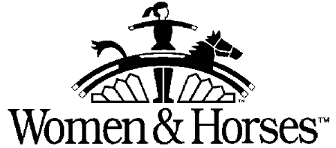|
Maverick
Press Article - December 2000
The Barbie
doll era must have started many of us thinking that our bodies
bend from the waist and that our lower section and upper section
are separated by the waist area. After all the belt is cinched
at the waist and provides a natural visual division. We can
seemingly "bend" from the waist area when we slump
our torso or we can falsely achieve an erect position from the
waist upward. In the military, ballet and gymnastics, to name
the most obvious, people are taught to lift the rib cage, pull
the shoulders back and chin up to stand at attention or salute
the judge. Sound familiar from one of your riding lessons?
Since all
of my research over the past 10 years is based on the needs
of the female athlete; since I am a female rider and since 80%
of the riders and participants in horse sports today are female;
I will be speaking mainly to the female issues. However, biomechanics
of the body should be familiar to all riders.
In my clinics
and presentations, I ask participants what they do when they
hear the command of "sit up" or "bring your shoulders
back" in their lessons. The instructor may be asking for
improved posture and alignment but without body awareness and
biomechanical understanding, the rider will usually go into
a statuesque or military position by lifting the ribs, pushing
out the chest, and rolling the shoulders backward. This automatically
puts women at a disadvantage in her balance, effectiveness and
comfort. Men, too, will experience imbalance and tension throughout
the body with this stiff position. Compression of the spine
is the result of this misunderstanding.
To "sit
tall and straight" without compression in the spine and
tension in the neck requires bending from the hip joint first
which then leads to effective movement above and below and ultimately
an even flow of oxygen throughout the many systems of the body.
All movement
in the saddle begins and ends with a flexible hip joint, which
is the joint just under the femoral artery connecting the femur
(thigh bone) to the pelvic structure. We have flexibility and
movement in the waist but it moves because of the chain of vertebrae
and not because it is a joint. If the spine is straight and
aligned over a neutral positioned pelvis, the hip joint can
remain in full range of motion to access the leg below. Subsequently,
all of the hinges toes, ankle, knee, hip to spine, neck and
shoulders, wrists and fingers can align and flow together with
the horse's motion.
To check
your spine alignment, place your hand just under your belt and
press on the lower back. Bend forward and you will feel the
bones of the spine protrude, now bend backwards and feel the
spine disappear. Somewhere between those two extremes of flexibility
there is a middle where you feel the tips of the vertebrae and
the muscles in the back soften. Check your spine in and out
of the saddle and become familiar with your own alignment.
To learn
to sit tall without compression and stiffness try this exercise.
Sit in a chair or in the saddle and collapse from your waist
by rolling your chin down to your chest and continue rolling
forward until your head is almost in your lap. Now slowly bring
your self back up, with your chin still against your chest,
without lifting your rib cage. Go slowly and focus on raising
up and becoming tall, as if you had a string connected from
the ceiling to the top of your head like a puppet, without bringing
the ribs up and rolling the shoulders back. Do this exercise
in front of a mirror looking sideways to check your upper body
alignment. This may take some practice and you may need to take
a deep breath in and blow it out to make sure you are not holding
your breath in your mid-section.
Once you
are all the way up, slowly bring your chin up to a level position
and check your alignment in the mirror. Do this exercise and
check your lower back every time you get in the saddle and you
will begin to adopt this "straightness" without having
to review yourself in the mirror.
Understanding
that your power and balance begin with movement in the hip joint
is crucial to an effective and long, safe and comfortable life
in the saddle. The horse will feel you as light and in balance
leading to heightened performance and freedom of movement.
Return
to Articles Index
Mary D.
Midkiff's new book, She Flies Without Wings: How Horses
Touch A Woman's Soul (Random House, Delacorte Press)
is now on sale at Amazon.com
|
![]()
